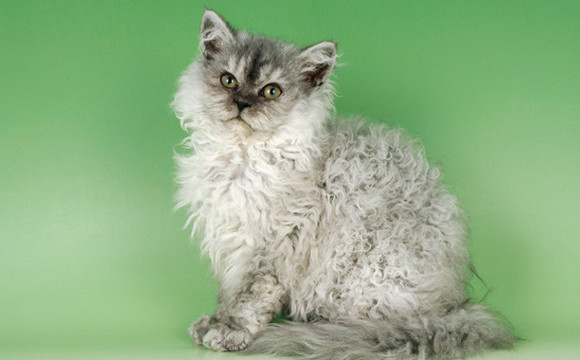History and Origin
The Selkirk Rex is one of the newest breeds recognized by U.S. cat associations, developed primarily by breeder Jeri Newman from Livingston, Montana. In 1987, Newman discovered an unusual curly-coated kitten at an animal shelter, which she named Miss DePesto. Intrigued by the kitten’s unique coat and personality, Newman bred her with a Persian male, resulting in a litter where half the kittens had curly coats. This marked the beginning of the Selkirk Rex breed. Over time, Newman combined traits from the British Shorthair, American Shorthair, and Exotic Shorthair to enhance the breed’s characteristics. The Selkirk Rex gained recognition from various cat associations by the early 1990s, achieving Championship status with ACA, TICA, and UFO.
Physical Characteristics
The Selkirk Rex stands out due to its distinctive curly coat, which is governed by a dominant gene. This means only one parent needs to possess the gene for the trait to be passed on. Cats with two copies of the gene have even curlier and softer fur. The breed comes in both long and short-haired varieties, with the coat undergoing several changes as the cat matures. Selkirk Rex kittens are born with curly fur, which straightens before becoming curly again at around 8 to 10 months. The coat reaches full development by the age of two and can be influenced by climate, season, and hormones.
Personality and Behavior
Selkirk Rex cats are known for their fun-loving, mellow nature. They are very affectionate and people-oriented, maintaining a playful and kittenish demeanor well into adulthood. Their social nature means they do not thrive in isolation and prefer being in the company of their human companions. They are intelligent, docile, and good with children and other pets, making them ideal for families.
Grooming and Care
Despite their curly coats, Selkirk Rex cats do not require excessive grooming. Regular brushing helps prevent matting, especially for the long-haired varieties. Their fur can accumulate oils and dirt, so occasional baths may be necessary. As with all cats, routine dental care, ear cleaning, and nail trimming are essential to keep them healthy.
Health and Lifespan
Selkirk Rex cats are generally healthy and hardy, with a lifespan of around 14-15 years. However, they can be prone to some genetic health issues inherited from their parent breeds, such as polycystic kidney disease (PKD) and hypertrophic cardiomyopathy (HCM). Regular veterinary check-ups are crucial to monitor their health and address any concerns early on.
Breed Recognition and Popularity
The Selkirk Rex is recognized by major cat associations, including The International Cat Association (TICA) and the Cat Fanciers’ Association (CFA). Their unique appearance and friendly nature have contributed to their growing popularity among cat enthusiasts.
Key Points
- History: Developed by Jeri Newman in the late 1980s, combining traits from various shorthair breeds.
- Physical Traits: Distinctive curly coat, dominant gene, long and short-haired varieties, coat matures by age two.
- Personality: Affectionate, playful, social, good with children and other pets.
- Care: Moderate grooming, routine health care, watch for genetic health issues.
- Recognition: Recognized by TICA, CFA, and other major associations.
Conclusion
The Selkirk Rex is a delightful breed known for its unique curly coat and affectionate personality. They make excellent companions due to their playful and social nature. Proper care, regular grooming, and routine health check-ups ensure these cats remain healthy and happy throughout their lives. As their popularity continues to rise, the Selkirk Rex is sure to capture the hearts of cat lovers everywhere.
For more detailed information, you can visit the original article on Selkirk Rex Cat Breed.

